Vandhave i Køge / Køge Watergarden, Christoph Disco Schäfer 2021 for Hummings curated by Fulya Erdemici and Ulrikke Neergaard for KØS – Museum for Public Art, Køge, DK
Køge Water Garden is a series of 10 billboards placed in an area between the Marina and the North Beach of Køge. Seeing this land on a first walk in Køge with curator Fulya Erdemici, the artist was attracted by the freshly filled and leveled land – suspiciously empty land.
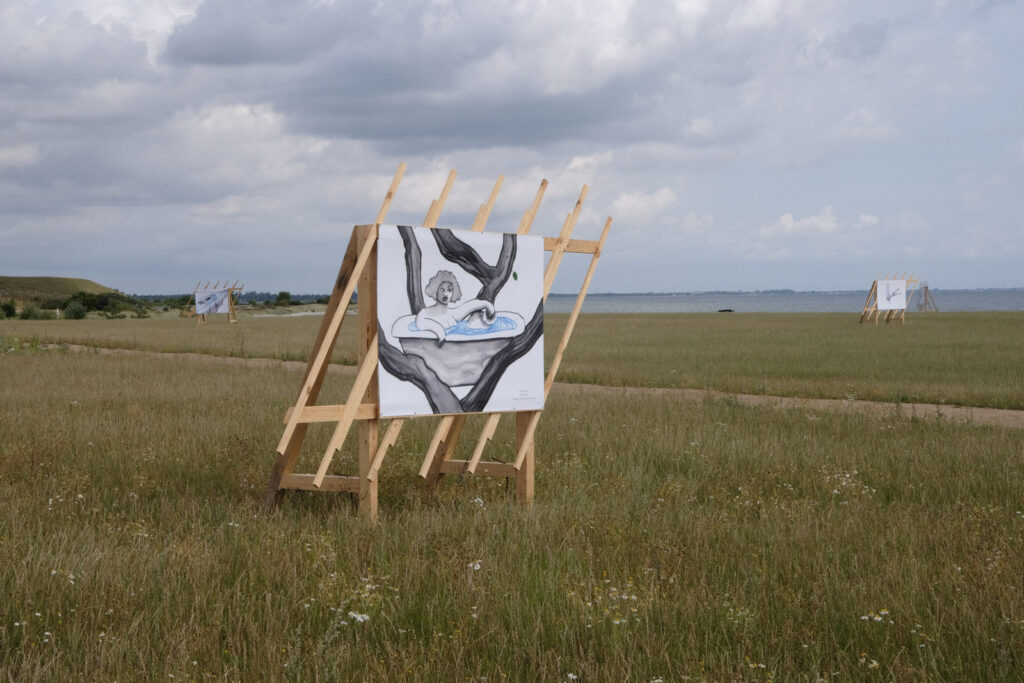
“Vandhaven i Køge” takes rumours about a planned waterpark as a vantage point for drawings unfolding relationships between people, parks and water, an interplay between symbolic worlds and earthly desires, between urgent ecologies and hedonistic pleasures, trees and songtitles, high-tech and simplicity, swamps and swimmers. This patchwork of possibilities dances on billboards over the freshly leveled plateau, contrasting the act of bulldozing, that so drastically speaks about the capitalist fantasy to reduce the compexity of possibilities of this land to only one possibility: that land becomes location value, becomes a real estate commodity.
“Vandhaven i Køge” also refers to fellow artists Annette Wehrmann‘s piece “Aaspa“*, which combined a critique of neoliberal urban development with references to the paintings Fountain of Youth by Lucas Cranach the Elder and Garden of Earthly Delights by Hieronymus Bosch. While technically the eternal youth hoped for in the historic “Fountain of Youth” paintings is becoming a highly problematic social darwinist possibility of perfection for the wealthy, these drawings suggest a different way, refering to symbolic meanings of water in many cultures as a medium of connectedness between living beings and contexts as well as to possibilities of different relationships between people and people and animals and ecologies.
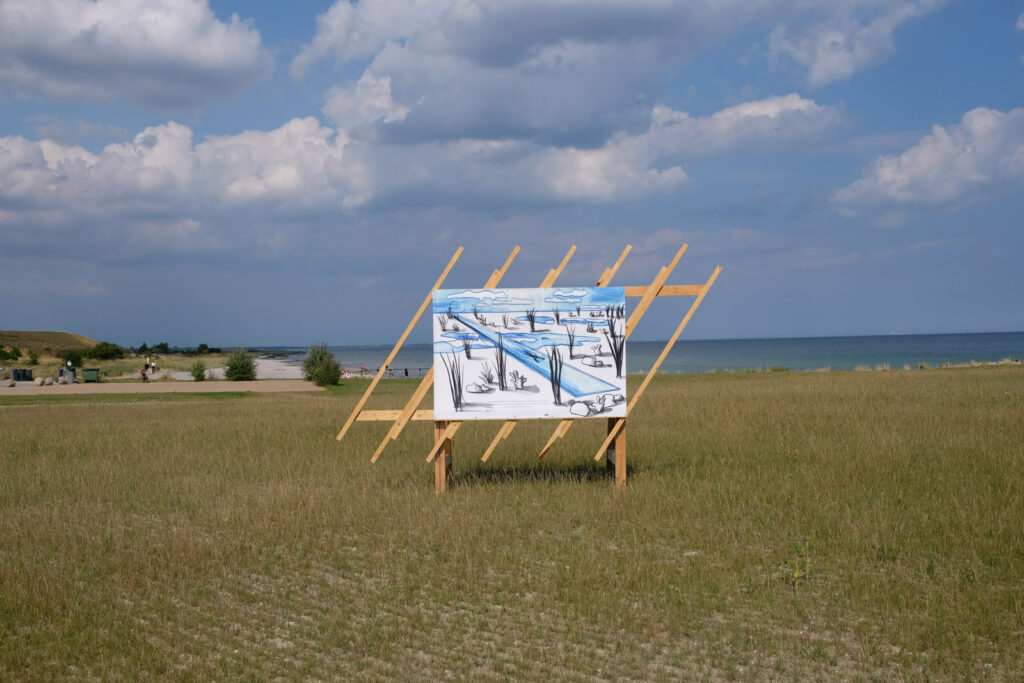
Fulya Erdemci’s title “hummings” is concerned with something pervasively pre-linguistic, pre-conceptual, something connecting man and animal and matter. It’s about entering new territory without already having a solution, a thoroughly articulated answer, and opening up spaces for intimations, hunches, and moods.
Crucially, these “Hummings” move into contaminated territories: a methan-gas ridden forest atop a mountain of garbage landfill, a suspicious wasteland by the sea, an abandoned silo among unfinished investor architectures already inhabited, a flood-threatened man-made ecotope, an urban forest where women suspected of witchcraft were persecuted.
The artworks in these areas no longer function autonomously or assert autonomy and self-sufficiency, but interweave with (social) ecologies.
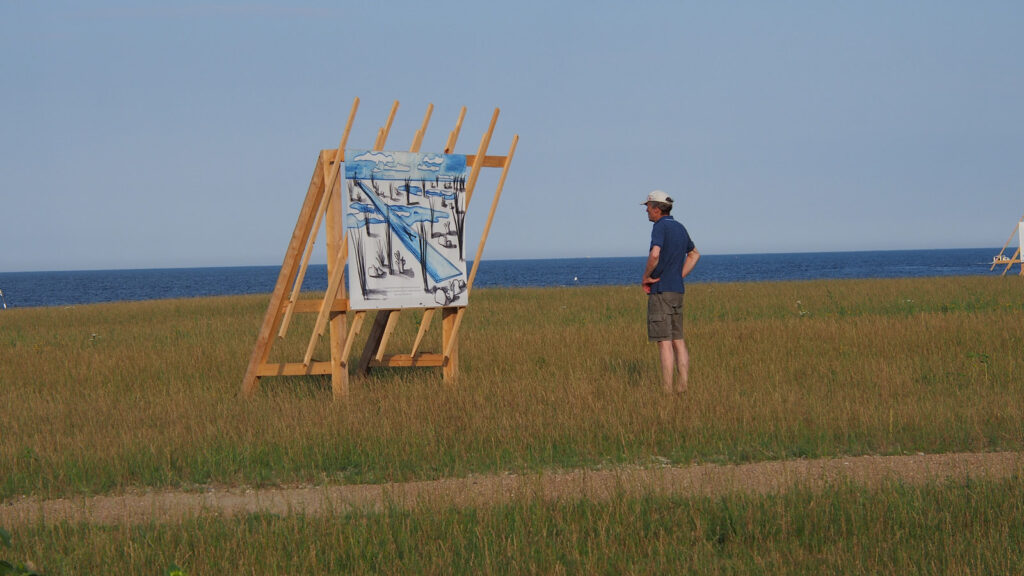

Ayse Erkmen’s “Lonesome George,” a tiny bronze sculpture of a recently extinct species of snail, provides a problematic bridge to the tradition of public domination sculpture that previously formed the core of the KØS collection. The snail lived alone in the laboratory for several years while scientists tried to find it a mate – in vain.
In a performance on the touristified central square of the small town, Karin Sander asked the population to place themselves on somewhat shaky pedestals. Whereas in F. E. Walther’s work the viewer heroically took the place of the sculpture, in “People on Stone Plinths” the status of the viewing participants has also become precarious.
Olga Ravn, a young feminist poet, filled the remains of the forest along a stream with the voices of women persecuted and murdered for witchcraft, silenced over centuries, and staged the reading as a hedonistic and intoxicating celebration – the prelude to Ravn’s year-long research on the persecuted women of Køge.
Jakob Jakobsen, with Monia Sander and Jesper Siberg, created a poignant tragedy about anxiety/ANGST: the concrete round was staged as a paranoid yet protective version of the ancient theater, with the surrounding balconies of unfinished investor architecture serving as an involuntary open-air stage. While Sander recited Jakobsen’s and other affected people’s texts in a chant situated between autotunes and muezzin, these passages were interrupted and structured four times by Siberg’s new-wave music. Jakobsen and Siberg had a dark-wave band together in the ’80s, a style for which fear was, after all, an important, if aestheticized, underlying mood.
Christoph Disco-Schafer furnished a vacant lot, a piece of land reduced to its land value, which had been brought into the conversation as a future location for a water park, with space-consuming construction site signs. On this “medium of lies” Disco Schäfer plays through simple playful ways of dealing with water and desire in lighthanded drawings, a “Køge Watergarden” with Chinese cloud generators, glass walls of aquariums, cleansing swamps and bathtubs in the trees.
Hale Tenger creates a sound installation with references to the murdered Hrant Dink and Leonhard Cohen in the garbage mountain forest. Rune Bosse makes the artificial forest even more artificial with showcases and manipulated climate. Kerstin Bergendal works out the sociogeography of the city in collaboration with residents from different classes. Maider Lopez stages the encounter of today’s people with nature as a stumbling dance that collaboratively appropriates the movement rhythms of waterfowl. Lea Gulditte Hestelund gives a body positive update to Poul Gernes appropriations of glacial erratic rocks and Viking folk art. SUPERFLEX create a cinema for fish that already anticipates the future rising sea levels. There are also beautiful videos, especially the great work of Asuncion Molinos Gordo with Turkish farmers, aiming at self-organization and resistant collaboration.

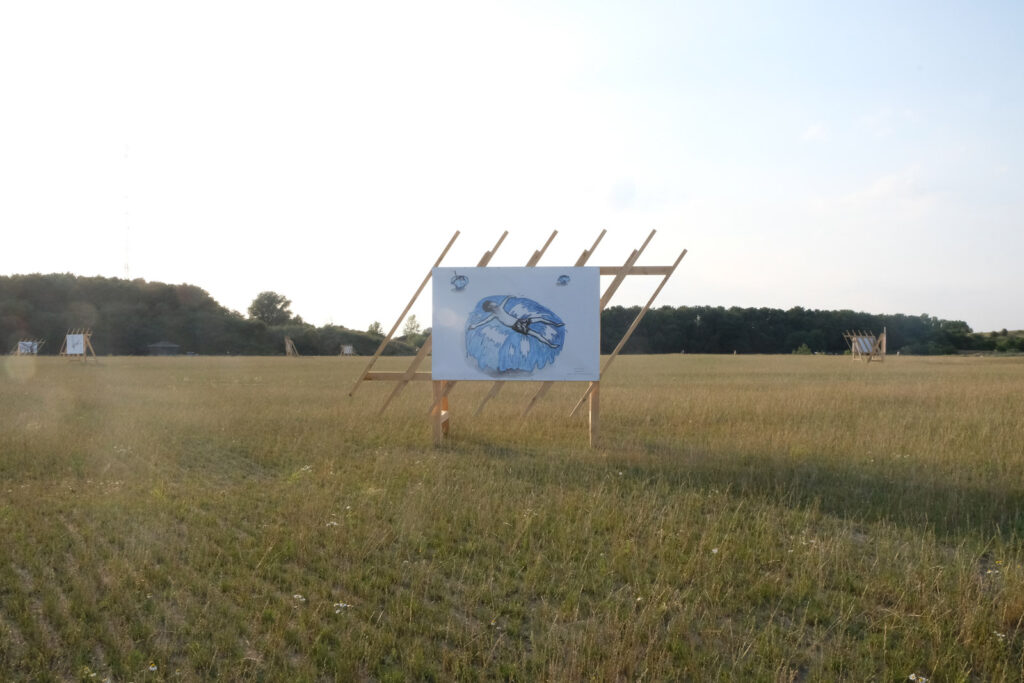
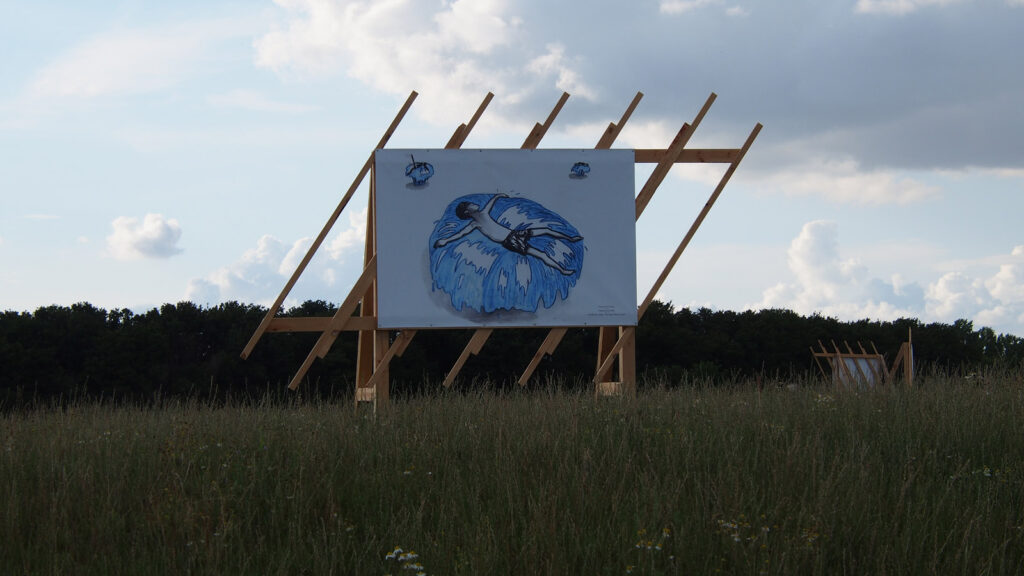

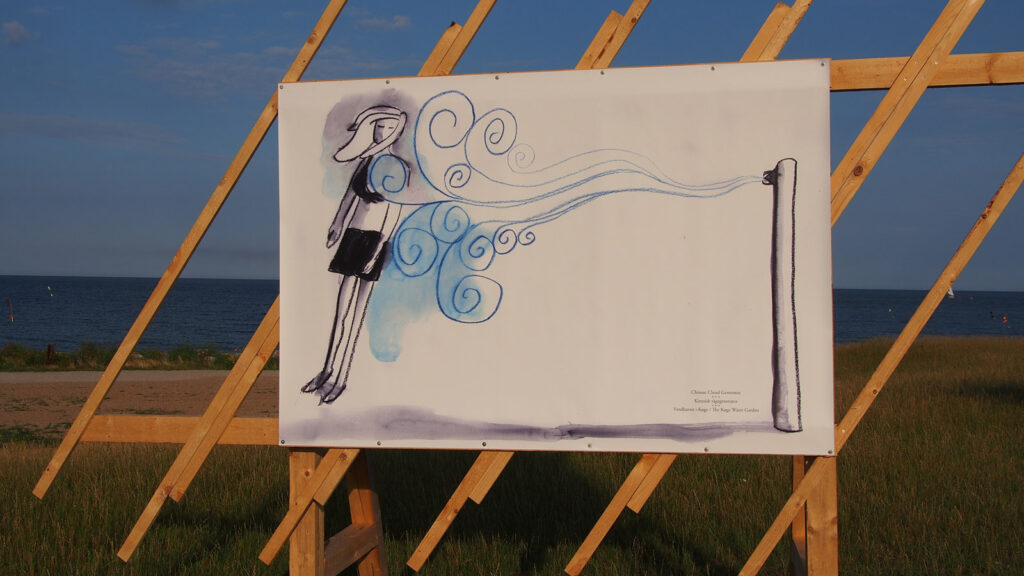
With this exhibition, curator Fulya Erdemci and director Ulrikke Neergaard cautiously hint at how an art of the future, working in assemblages, might look and work.
Denmark’s Museum of Public Art thus discreetly bids farewell to the paradigm of alienated objects and autonomous artist heroes, and for the time being sets out relatively unnoticed and largely misunderstood into the uncharted territory of unlikely encounters and collaborations. Keep watching this!
More Text on #hummings on the webpage of ARTFORUM https://www.artforum.com/picks/hummings-86629


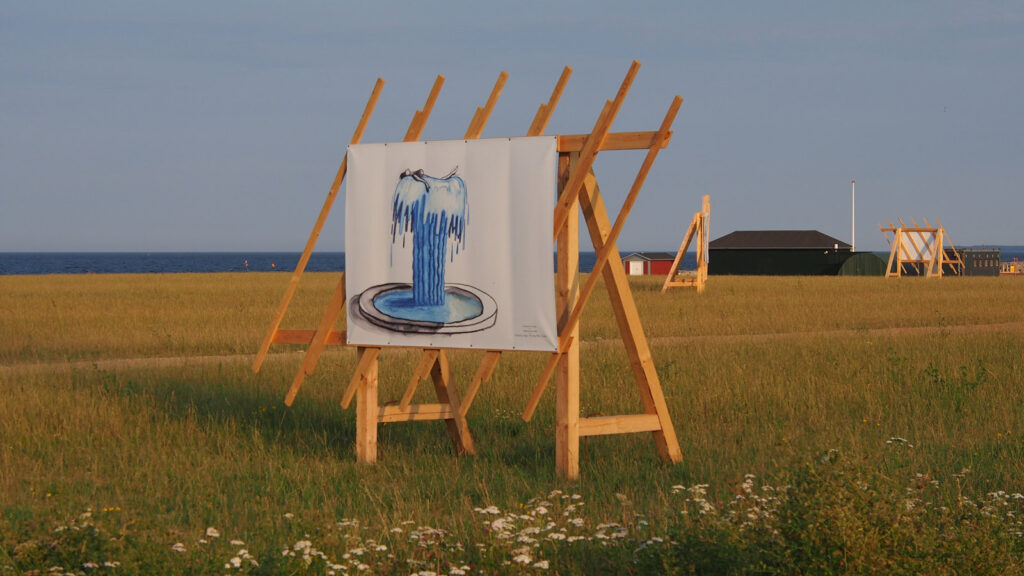
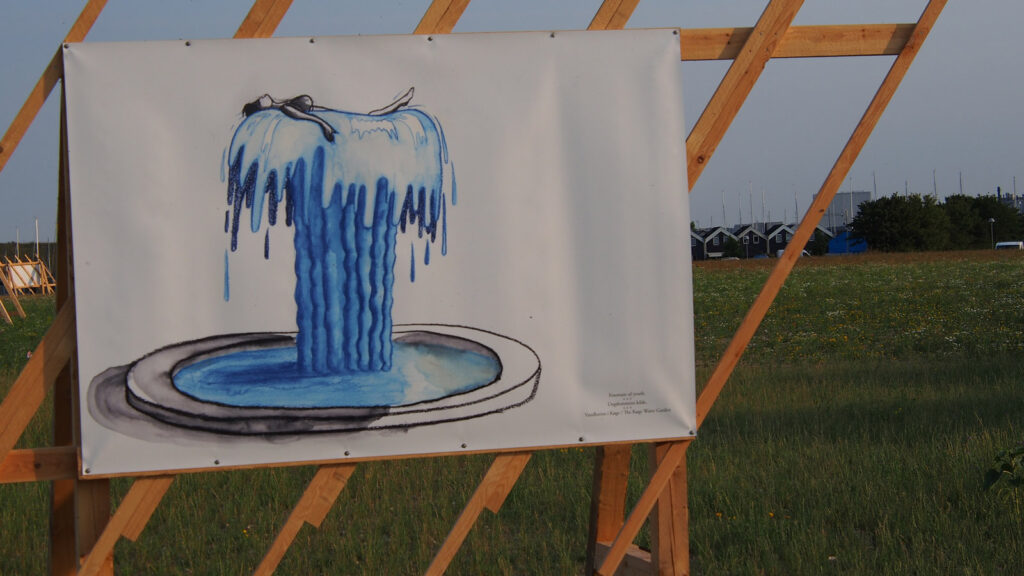
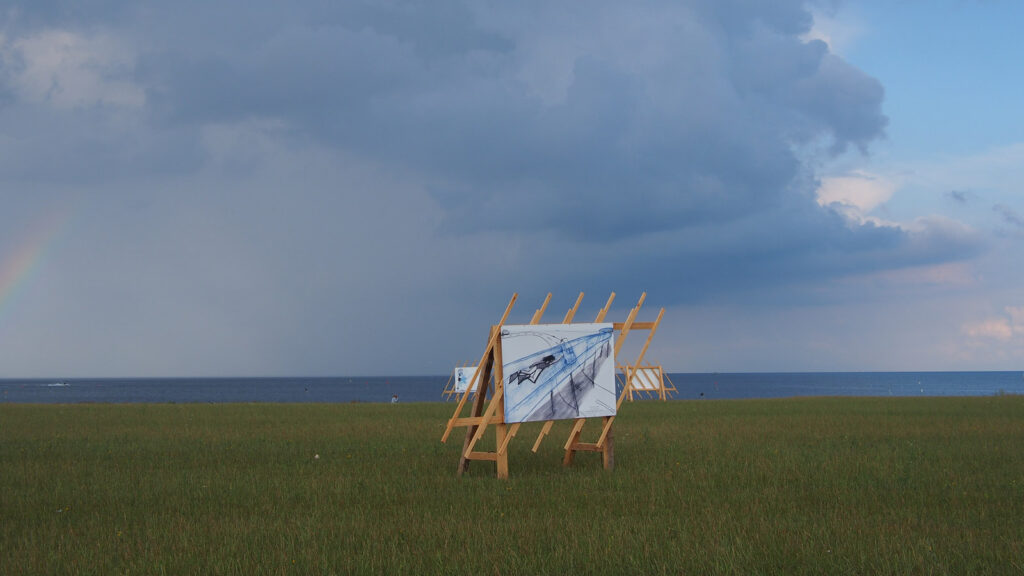


* “In 2007, as part of the sculpture projects in Münster, she closed off the riverbank popular with walkers and cyclists to set up an allusive construction site there, the “Aaspa”. Here, in a rarely understood way, she interwove the privatization of public space (and happiness) with a history of utopian architecture and Earth Art: Richard Long was quoted almost verbatim in an Earth Circle. While the enlightened visitors still knew how to read the negative gesture of blocking the shore, the artist’s hand-painted construction site signs met with incomprehension in progressive art circles: one expected the innocuous visual language of the fake – and thus many missed another , deeper level of this work, which speaks of the conditions of happiness.” Schäfer, Christoph, in: Rejecting the impositions of the world with a majestic gesture – Obituary for Annette Wehrmann, Springerin, Heft 3, 2010
Translated with www.DeepL.com/Translator (free version)